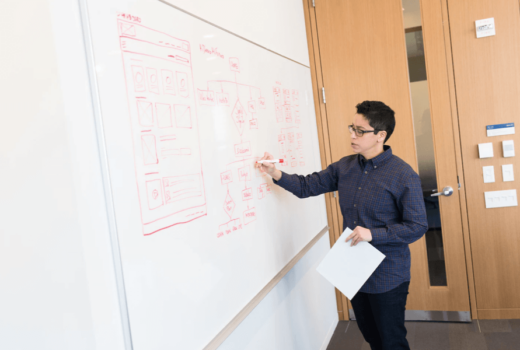Beleid dat werkelijkheid wil zien

‘Last year we, the 353 employees of the Youth Department, took to the streets of Helsinki, to shopping malls and recreational groups, to speak with young people. We decided to see how our work would change if we started with people’s lives. We didn’t ask about services. We listened to them talk about their daily lives and asked further questions.
More than 1000 interviews taught us the principles of good youth. There is plenty in common with the wishes of those in a difficult situation and the realities of those who are satisfied with their lives. We recognized four principles:
1. Friends: If you have friends, you have the courage to experiment.
Conclusion: Marketing for groups; attention to loners.
2. Action: Hobbies that allow success in a group.
Conclusion: Search engines, better activity of operations.
3. Relevance: Wellbeing entails a feeling that you have something to give.
Conclusion: Volunteering, summer jobs, budget participation.
4. Empathy: When able to put oneself in the shoes of others, others stop seeming like a threat.
Conclusion: Social mixing, family counselling.
More than 90% of the youth that we approached agreed to talk to us. We feel encouraged to do this every other year. We learned that young people want to tell about their lives when a grown-up is interested.
Not only young people want to make their lives visible. Successful contacts are carried out with a sense of determined wonder – treating people as the experts of their own lives. The interviewers must actively ignore their own experiences or those of their friends. One must refrain from suggesting solutions. This is not easy for professional helpers.
Design methods have allowed us to create a value base for renewing youth work. The interviews helped us recognize latent needs. We understood that feedback surveys will not produce new solutions. Ethnography helped us stop talking about belonging and start talking about friends. User profiles reminded that the user of the youth center and that of a housing unit is the same person.
The recognized desire for relevance encouraged us to expand participatory budgeting. In the future, we’ll open our budget to the citizens, listen to young people about their lives, and plan the work in each district together with its residents.
We understood in co-creation workshops that people want Helsinki to succeed. Indeed, the city needs better tools to make its reality visible if we expect design, for instance, to produce solutions for real problems. We learned that the most effective way to strengthen youth work is to help others see the reality of youth and help direct experiments correctly. In the autumn, we’ll start with innovative public tenders in order to find the best solution by co-creation challenges. Normally tenders aim at finding the cheapest executor for a pre-determined solution.
This is just the beginning. In the future, we can provide young people as experts to those who develop services. We can offer professional tours into their daily lives. With design, we bring the “public” back to public services.’
Tommi Laitio @tommilaitio was de voorzitter van de Nationale Studentenbond van Finland en lid van de Redactieraad van ScienceGuide. Nu is hij ‘Director of youth affairs’ van de Finse hoofdstad. Deze beschouwing schreef hij in het kader van de Helsinki Design Week; de weergave daar vindt u hier.
Meest Gelezen
Vrouwen houden universiteit draaiende, maar krijgen daarvoor geen waardering
Wederom intimidatie van journalisten door universiteit, nu in Delft
Hbo-docent wil wel rolmodel zijn, maar niet eigen moreel kompas opdringen
‘Burgerschapsonderwijs moet ook verplicht worden in hbo en wo’
Raad van State: laat taaltoets nog niet gelden voor hbo-opleidingen



